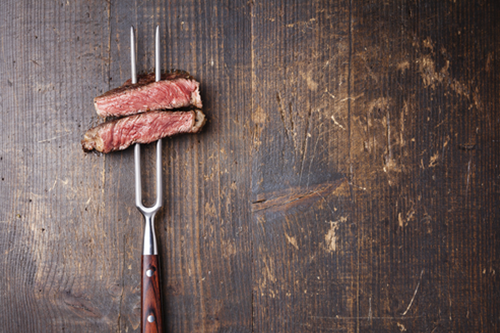
When cooking, it is immensely important to consider food safety, as your food is often exposed to contaminants that can cause illness or even death. Anything that comes in contact with your food has the potential to be a source of contamination, including cutting boards, which rank at the top of the tools used in the kitchen. Following are some helpful facts and tips to help improve food safety when using cutting boards.
For a long time almost all cutting boards were made from wood, however, at a certain point, the idea arose that plastic cutting boards would be easier to clean and sanitize, becoming the catalyst for the idea that they were safer.
However, in the 1980s, a researcher named Dean Oliver began testing both wood cutting boards and plastic cutting boards for food safety, and what he found was very interesting. Oliver found that while plastic boards were easier to sanitize, cutting on them left grooves and orifice where bacteria could easily hide. On the other hand, hardwoods, such as maple are fined grained, creating a capillary action that pulled bacteria in and trapped it — ultimately killing the bacteria and the board dried after being cleaned.
When cleaning your cutting board, it is important to understand that plastic and wood have different characteristics, so they must be cleaned differently.
Plastic cutting boards have the capacity to be washed in dishwashers, where the high temperatures would aid in the sanitization process; however, wood cutting boards, even high quality ones like the ones sold by walnutcuttingboards.com, would be ruined in a dishwasher. This means that wood cutting boards must be washed by hand.
When washing a cutting board by hand: Make sure that all debris is completely rinsed off Scrub the board with soap and water Sanitize the board with a sanitizer made for wood boards Use a chlorine-based sanitizer, such as bleach and water, when cleaning plastic boards Because chlorine actually binds easily to organic material, it would actually counter the natural antibacterial properties of the wood. It is important to note that you should also sanitize your kitchen counters, sponges, towels and all other cleaning utensils, so that you don’t end up cross-contaminating your boards.
One important step in cleaning cutting boards that is often missed is drying it. After you dry it with a clean, dry cloth, make sure that you place it somewhere where dry air circulates, so that the drying process can be completed. When to Replace Your Cutting Board At a certain point, washing and sanitizing the board will not be sufficient, and you will have to replace the board. This is especially true with plastic boards. It is most likely time to replace the board when the board as accumulated a lot of deep cuts and grooves. The more grooves that you can find in a cutting board, the more the board will be prone to trapping bacteria.